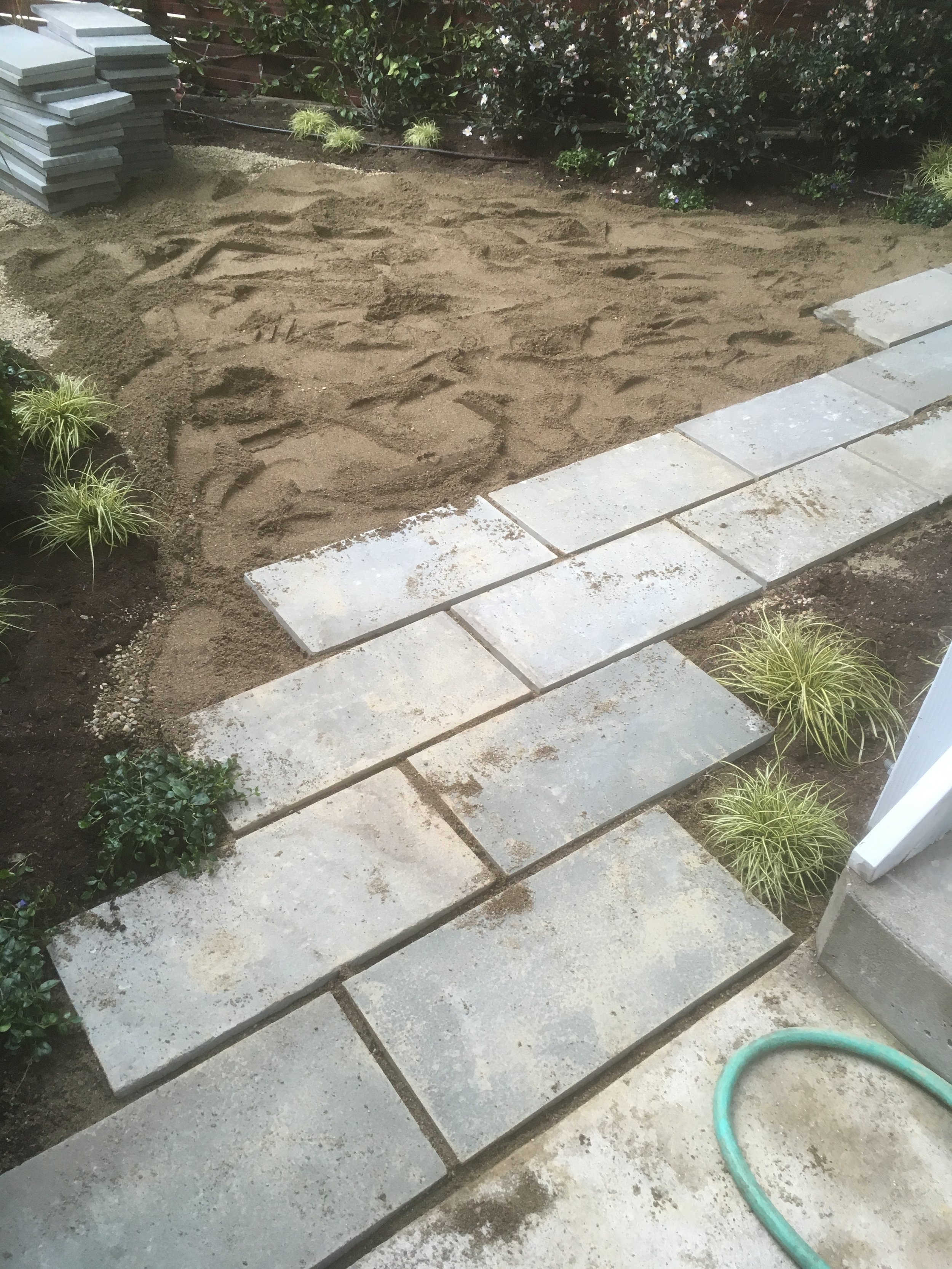Disused paved area to Sensory Destination Garden.
Unlocking the potential in small urban land parcels.
Due to the high land value and small plot sizes in San Francisco, I am often presented with a diminished garden footprint, especially after home remodeling and construction have all but swallowed up any garden space on the lot. These spaces often become sad bin sheds or dumping areas for household junk. Clients are skeptical about the potential of these small spaces. These areas are often paved with simple concrete post-construction; the assumption being that the space is too small for a ‘real garden’ but in reality, once the concrete is peeled back and long-buried native earth is revealed they provide exciting opportunities for surprising urban oases.
The Brief
The homeowners had completed the construction of their three-story home and were looking to create a simple private courtyard space to entertain.They wanted a modern aesthetic complimentary to their newly remodeled home. I was asked to create a tranquil space with an emphasis on foliage and minimal color/ flowers. Their main living area was situated three stories above the garden so this space would have to be visually appealing from above as well as a destination worth making the effort to visit!
All small spaces have the potential to be a garden.
This project located in the Potrero Hill neighborhood of San Francisco was a prime example of unused garden potential. The small space metamorphosized from an awkward, triangular overlooked concrete pad - to a private scented courtyard.
Designing a garden in harmony with the architecture
In response to the architecture - the plant palette was pared down to a few species, for hardscape we chose a simple brick pattern of Connecticut blue stone with decomposed silver gravel as ‘grout’ creating visual interest by playing off the geometry of both the lot itself and the vertical and horizontal lines of the bespoke fencing. Clipped English boxwood globes and lush Japanese sedges helped soften the linear, formal geometry of the space in the absence of flowers. The lone existing tree- a large loquat tree whose roots previously sulked under concrete was retained, aesthetically pruned and became an additional privacy screen.
Constraints of the Landscape Project
The most challenging aspect of this project was the clearance of the site. With multiple layers of debris, broken glass, and matted roots underneath the existing layers of concrete it was a challenge to return this site to fertile soil. Limited access through a finished basement made demolition and reconstruction time-consuming. Creating adequate useable space without overwhelming the garden with hardscape was also a challenge. We addressed this by feathering the paving so that it blended into the planting beds, providing enough hardscape area for a table and chairs without compromising the botanical elements of the garden.
Lighting in a small city garden.
The addition of spotlights on the trees and striped bamboo created additional interest as viewed from the house above as well as expanding the useable hours of the garden. The garden became a scented sanctuary and a place to entertain family and friends despite its modest and restrictive footprint.The addition of spotlights on the trees and striped bamboo created additional interest as viewed form the house above as well as expanding the useable hours of the garden. The garden become a scented sanctuary and a place to entertain family and friends despite its modest and restrictive footprint.







